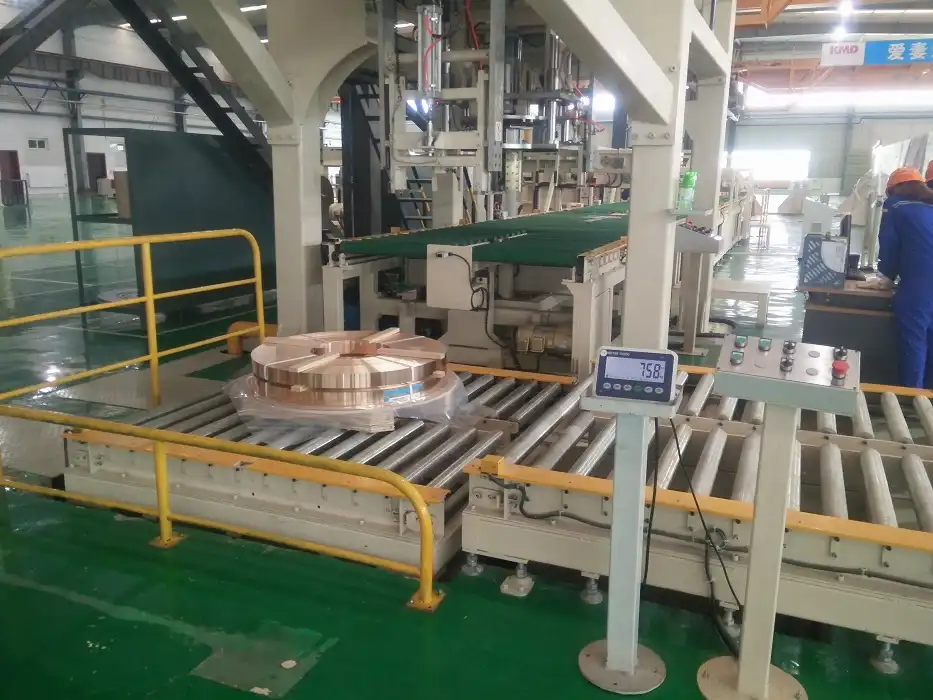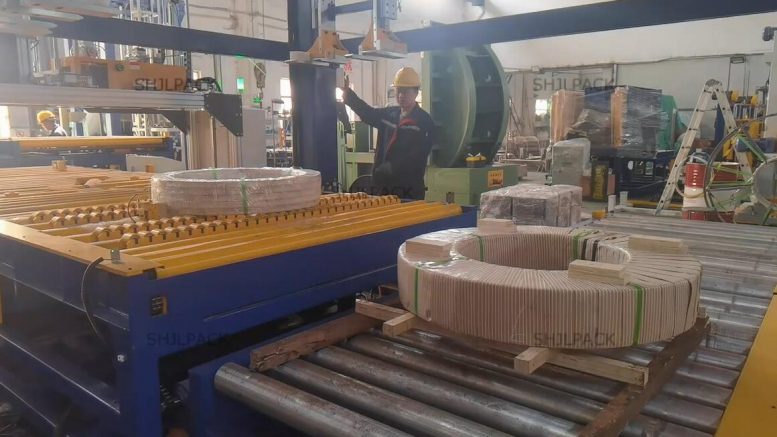How to Choose the Best Coil Packing Line for Your Production Needs
Choosing the right coil packing line is crucial for minimizing damage and maximizing efficiency in industrial production. Get it wrong, and you’ll face costly delays and product losses.
Selecting an ideal coil packing line involves evaluating production capacity, product specifications, budget constraints, and automation levels, to ensure seamless integration with existing processes while enhancing productivity and quality.

Navigating the complexities of choosing a coil packing line requires a tailored approach. By understanding your production needs and the technology available, you can align solutions with your business goals.
1. What are the essential factors to consider when selecting a coil packing line?
Identifying key elements that impact your packing line choice is akin to setting the cornerstone for your production efficiency.
Key factors when selecting a coil packing line include material type, weight capacity, space considerations, automation capabilities, and after-sales support, which collectively determine the overall effectiveness and reliability of the system.

Diving Deeper into Key Factors
Before diving into the technical specifications of different models, consider the specific needs of your operations. What materials are you handling? What is the weight capacity required? Let's break these down.
-
Material Type and Specifications: The robustness of the coil packing line should match the physical properties of the coils. This ensures that delicate coils are packaged with care, while more robust materials are handled efficiently.
-
Weight Capacity: Ensure the system can accommodate the maximum weight of coils you process. This avoids overloading, which could lead to mechanical failures, production downtime, or unsafe working conditions.
-
Space Availability: Space constraints in your facility can significantly impact which models are suitable for your needs. Compact designs can be ideal for smaller spaces, optimizing floor area while still delivering operational efficiency.
-
Automation Level: Consider how much of the process you want to automate. Higher automation levels can lead to reduced labor costs and increased consistency, but they may come with higher initial investment costs.
-
Post-Purchase Support: Good after-sales service can differentiate a good investment from a bad one. Consider warranties, maintenance packages, and the reputation of manufacturers for post-purchase support.
Here's a table summarizing these factors:
| Factor | Importance |
|---|---|
| Material Type | Must match line strengths and specs |
| Weight Capacity | Avoids machine overloads |
| Space Availability | Impacts choice based on facility size |
| Automation Level | Determines labor cost and efficiency |
| Post-Purchase Support | Essential for operational continuity |
Each of these elements contributes to the overall effectiveness of your coil packing line. By considering these factors carefully, you can select a solution that is not only functionally robust but also aligned with your strategic goals. Whether your priority is cost efficiency, speed, or ease of use, a thorough understanding of these factors will guide you toward the best choice.
2. How does technology integration enhance coil packing line efficiency?
Problems in packaging lines can lead to inefficiencies and increased costs. Addressing these issues with advanced technology solutions attracts industry professionals. Focus on merging technology to boost effectiveness.
Technology integration in coil packing lines results in increased efficiency by automating cumbersome processes, minimizing human errors, and optimizing workflow management. Technological advancements bring out faster and safer packaging operations.

Understanding Technology's Role in Efficient Coil Packing
To understand how technology enhances coil packing line efficiency, we must analyze several critical aspects. First, consider automation. Automated systems reduce manual handling, allowing more consistent and error-free operations. A study shows automated systems can save up to 40% in labor costs.
Then, examine data-driven decision-making. Implementing technology that monitors, collects, and analyzes process data helps reach optimal efficiency. Real-time data enable adjustments, ensuring smooth operations. Reports state smarter decisions can improve productivity by 30%.
Lastly, focus on safety improvements. Automated systems include sensors and machine learning. These increase safety dramatically, reducing accidents by around 50%. For businesses like FHOPEPACK, safeguarding both material and human resources is paramount.
| Aspect | Benefit | Example Effect |
|---|---|---|
| Automation | Labor cost reduction | Saves up to 40% in manual expenses |
| Data-driven decisions | Boost productivity | Increases efficiency by 30% |
| Safety improvements | Lower accident rates | Reduces accidents by 50% |
Understanding each factor helps streamline operations and make informed investments in technology. Factor analysis reveals tangible benefits for enhancing overall efficiency.
3. What is the cost-benefit analysis for coil packing lines?
Balancing costs and benefits is crucial for any business. In coil packing lines, getting the right balance can unlock greater profitability and efficiency. Explore metrics to achieve this.
A thorough cost-benefit analysis of coil packing lines reveals that investing in advanced technology significantly lowers long-term costs while ensuring production efficiency and quality enhancement. Evaluating initial setup costs against ongoing savings is key.

Breaking Down Costs and Benefits in Coil Packing
Evaluating costs and benefits means looking at installation, production, and maintenance. Here's an analysis of the economic impact:
Installation Costs: Initial investment in machinery can be high. However, modern machines come with advanced features that justify their price. They last longer and need fewer repairs, cutting long-term expenses.
Production Costs: Technology integration reduces production costs by lowering labor expenses and increasing output. Automation results in a consistent product quality, which minimizes rework and wastage.
Maintenance Costs: Technologically advanced systems often involve predictive maintenance. This avoids breakdowns ensuring uninterrupted operations and decreasing unexpected repair costs.
| Cost Aspect | Short-term Impact | Long-term Advantage |
|---|---|---|
| Installation | High initial expense | Reduces with durability, fewer breakdowns |
| Production | Moderate savings | Cuts in labor and enhances quality |
| Maintenance | Regular service costs | Predictive maintenance prevents failures |
Achieving the right balance between upfront costs and future gains enables better strategic decisions. Successful implementation of automated systems also supports sustainability and growth.
Conclusion
Selecting an efficient coil packing line depends on evaluating how well technology and cost align with production goals. Smart technology adoption minimizes costs and boosts operations, achieving both immediate and long-term benefits.
Summarize the vital points for selecting an efficient coil packing line, emphasizing the importance of aligning technology and cost with production goals.
